V-Commandos is a cooperative game set in World War II, designed by Thibauld de la Touanne and published by Triton Noir.
What’s the difference between V-Commandoes and other World War II, mission-driven games? Rather than tell you, I will illustrate with scenes from the Rambo movie franchise. A lot of folks conjure this type of image when they think of Rambo:
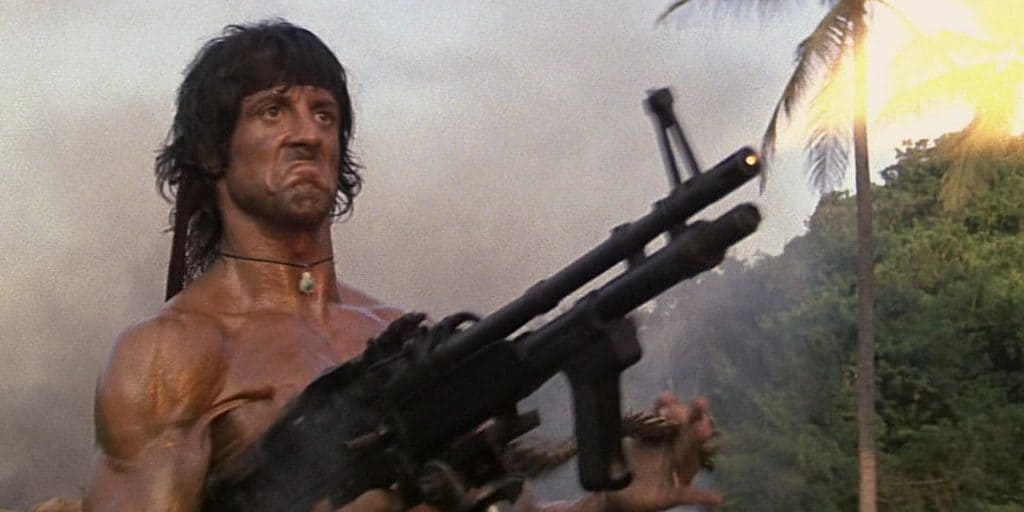
V-Commandos goes another route. Instead, it offers gameplay much more similar to some of the action in the original Rambo movie, First Blood:
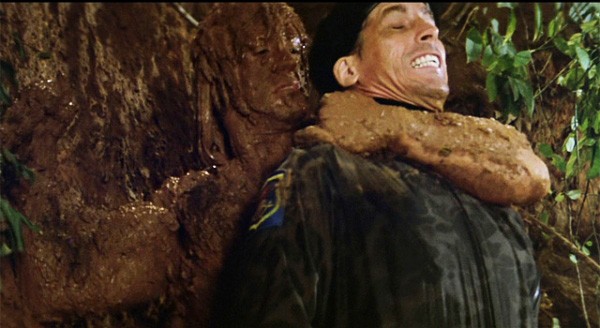
In a similar manner to John Rambo surgically dismantling Sheriff Teasle’s search party, the heroes in V-Commandos attempt to accomplish their missions using stealth, patience, and intelligence to complement the inevitable gunfire. To offer a different comparison, V-Commandos shares more with stealth-driven video games like Metal Gear, Deus Ex, or even Batman: Arkham Asylum than with video games actually set in WWII, like the original Call of Duty series.
How does V-Commandos achieve such a different style of gameplay? Does its emphasis on stealth enable it to stand out among so many other, more action-oriented WWII games?
How to play V-Commandos
The Good Guys:
You begin by choosing one of five possible specializations for your commando, such as the Sniper, Medic, or Sapper. The commandos hail from the different Allied countries, but those do not have impact on the game. Each commando also gets a starting weapon and some equipment, like First Aid kits or TNT.
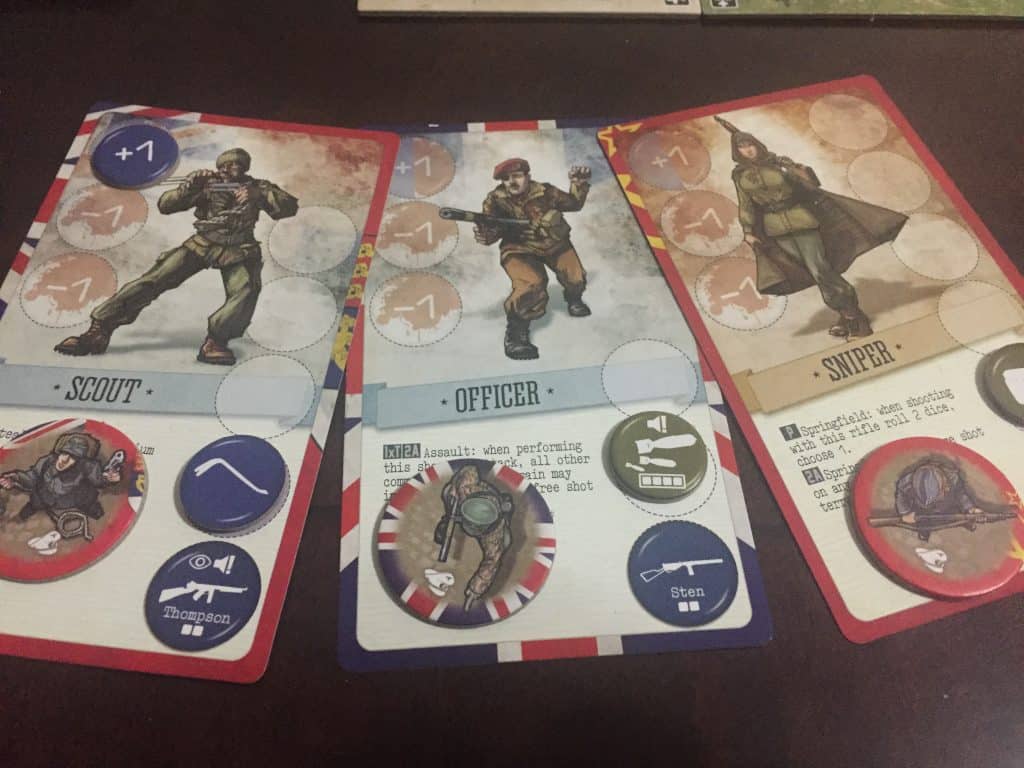
Mission and Map Tiles:
Missions in V-Commandos occur on modular tiles that come in small, medium, and large sizes. All of the tiles depict outdoor and indoor landscapes on either side. You can choose among 26 different terrain layouts for a one-shot mission, or you can choose one of the game’s eight longer missions that string together the terrrain layouts into a longer tactical operation. So, you can choose if you want to do a quick jaunt into the Weapons Depot to destroy some MP40s. Or you can engage in Operation Snowflake, which takes you through The Weapons Depot and the Village before culminating in the Underground Base. Hope you have lots of table space!
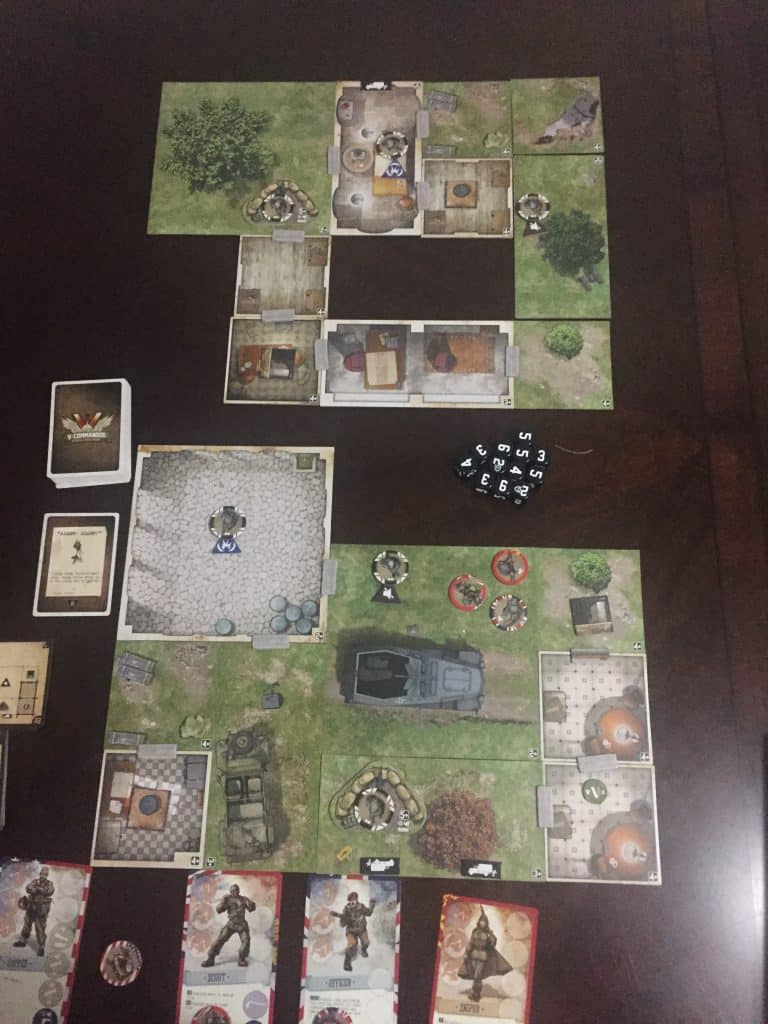
Player and Enemy Actions:
After you begin the round by drawing from an event deck, each commando gets three actions. If you want to have any success at the game, you have to plan your movements very carefully because you want to stay “stealthy” for as long as possible. That means dodging around patrols, using double moves to enter certain spaces, or even saving actions (once per round) for later when a more advantageous opportunity presents itself.
If you enter a square with an enemy, you roll a die; on a 1-2, the guard sees you and raises the alarm. You can’t mitigate the luck of that roll, so you want to do that very judiciously.
After the player turns, the enemies then spawn at certain entry points and move around the board, depending on a directional arrow on the event card. The enemy spawns one at a time at each reinforcement space, normally. However, if any commando had become visible at any time during the turn, the alarm triggers and doubles the number of enemy spawns. If that happens too early in your mission, you will likely fail it. So, stay stealthy for as long as you can…
… keeping in mind that, in all likelihood, you will have to break out those noisy guns at some point. Gunfire, in this game, depends largely on your weapon and the position of your targets. Most weapons let you roll 1 or 2 dice, the success of which depends on the size of the tile that your target is on. For enemies on a nice, big open field, you only need a 2 to succeed. Shooting someone on a small tile, however, gets a lot more difficult (4+).
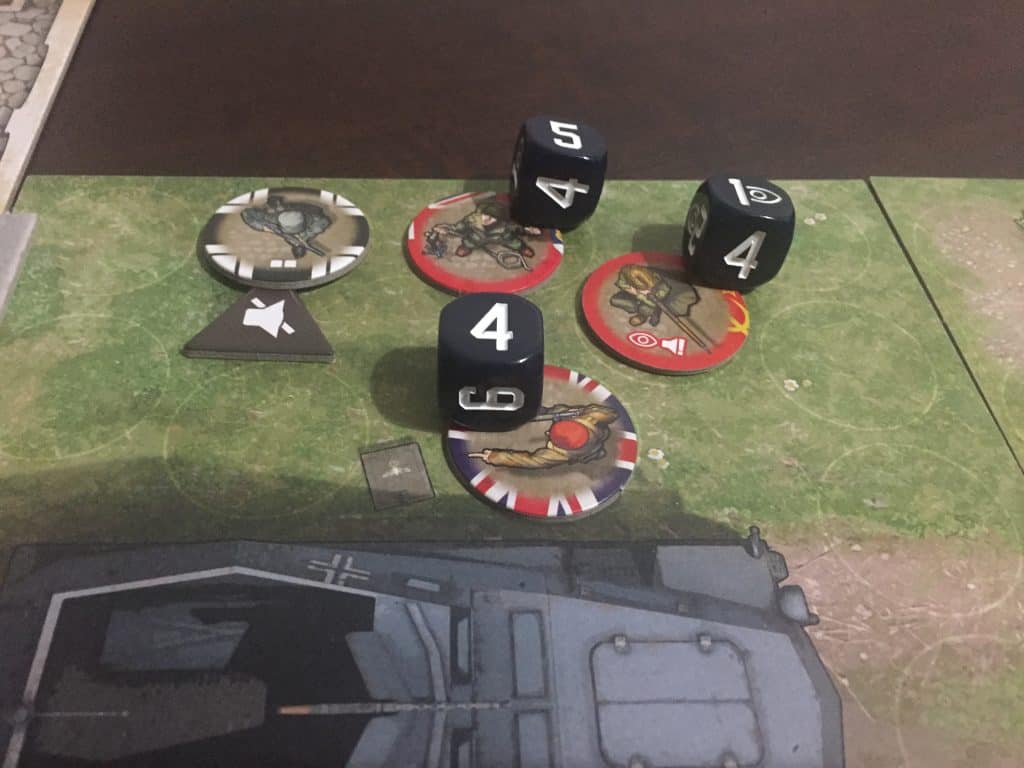
Victory and Defeat:
In order to win either an individual mission or a full operation, you usually need to interact with an objective token in some way. The objective tokens stand in for all sorts of stuff – a car that needs its tires slashed, documents which could use a new home, etc. Like with many cooperative games, you can lose in many different ways. If you run out of enemy spawns, or if everyone takes too much damage, you lose. Also, each individual mission will establish different loss conditions. You might lose if you run out of time (measured with the event deck), or if you get too many of a certain token on the board.
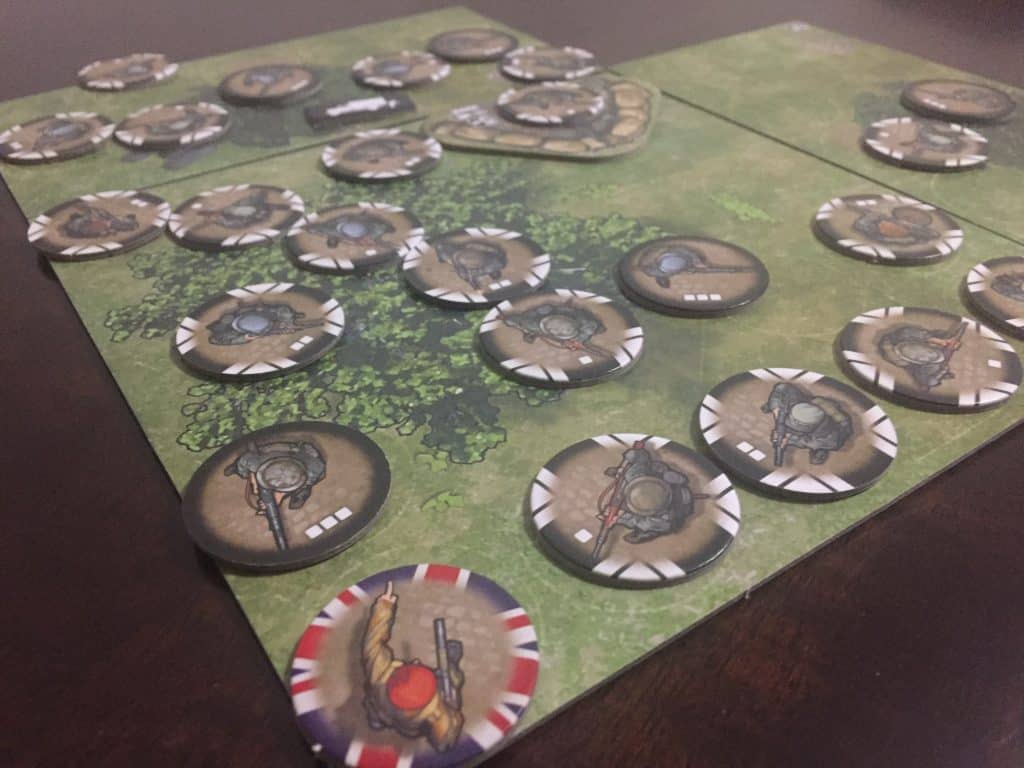
What I liked about V-Commandos
1) It feels like a stealth game
Full disclosure: I am a HUGE stealth video gamer. I would much rather move through individual rooms and take everyone out silently or stealthily than shoot the place up. If a game has a “complete the game with zero kills” achievement, I’m on it!
Having said that, I wondered whether a board game could replicate the feel of a genuine stealth game. Good stealth games present difficult, tense, yet eventually solvable puzzles. You have to find undetectable spaces in the room, watch the enemy walking paths, calculate where you can strike, and (depending on the game) find suitable potted plants in which you could hide the unconscious bodies.

I was especially skeptical when I read that, in V-Commandos, stealthing into a spot required a die roll with no real mitigation. To my great relief, the designers set up the different missions so that you didn’t have to do that too often. Most missions encourage you to stay stealthy, but only up to the point where you could set your squad up to strike most effectively (i.e., complete an objective and/ or take out a bunch of bad guys).
Even when gunplay commences (which it inevitably will), you have to approach that intelligently. Every operation’s victory condition involves an escape of some type. Since your squad has no chance against overwhelming numbers, you have to puzzle out who will make a break for the exit, who will open the trap doors, and who will provide cover via guns, bombs, or barricades. Very satisfying.
2) Simple ruleset
I really admired how they were able to accomplish the feeling of a genuine stealth game without a massive, clunky ruleset. The game could have easily tried to include a number of stealth game staples, including facing, line of sight, huge menus of items, increased chances to detect characters holding certain items, etc. V-Commandos found ways to abstract out a lot of that stuff, yet keep the core of what makes a stealth game good.
Combat, in particular, is incredibly simple and has a lot of dice-chuckery. If this were a combat-driven game, I could see a lot of gamers being turned off. However, because you’re really not supposed to engage in combat until the back half of your missions, I found the simple combat part of the game to fit very well in the overall structure, while also delivering lots of fun and tension in itself.
3) Tons of variety and replayability
V-Commandos manages to squeeze a lot of unique gameplay out of the base box. I wished it included more than five commandos (you’ll need some expansions to improve that). But the 26 different terrain layouts give you a lot of bang for your buck. If the mission objective was destructible (like in the Weapons Depot), you could approach the mission a bit more aggressively than if you were supposed to collect a bunch of papers. The game also includes escort quests, tower defense quests, and lots of different wrinkles to the “get in, do a thing get out” formula to keep you entertained for quite a long time.

What I Did Not Like about V-Commandos
1) Enemies are too dumb to really do great “stealth stuff”
I praised the simple ruleset above, and I stand by that praise for the sake of accessibility. However, I think that for the enemies in particular, V-Commandos could done more for the sake of giving the players more room to affect the board, feel cool, and “solve the puzzle”, so to speak.
Enemies only have two movement modes – move one square towards a cardinal direction on the event card or, if a commando is visible, move one square towards that commando. If a commando pops out of stealth for one action, then ducks into an empty room and reenters stealth for another action, the enemies don’t automatically follow! How does that make any sense? In many stealth games, popping out and back into of stealth is a valuable way to lure enemies into advantageous positions.

I also miss simply making a noise in a room to draw an enemy over. Enemies don’t follow noises in V-Commandos; they only respond to the commando’s visible/ stealth state. That’s a bummer. Planting TNT/ a smoke bomb/ sleeping gas bomb, then making a noise to draw troops, then running away is Stealth Game 101!
I find this to be the biggest drawback to V-Commandos, at least for me. The whole lure of the game is that it feels like a stealth game. Anything that takes away from this feeling takes away from the entire package.
2) Lack of realism/ unintuitive rules elements
Once again, I hesitate to point this out as a criticism this because the designers have made an explicit choice towards simplicity and abstraction. However, some of the unrealistic elements stretch credulity. Further, they actually made the game a bit harder for me to learn because they felt unintuitive.
I spoke about enemies not following moving commandos above. Another example comes with moving into medium sized tiles. If you take one action to do so, your commando becomes visible, even if every enemy on the board is on the other side of the map. It also doesn’t matter whether the middle sized tile is an indoor or outdoor tile; you still have to use a two action move. Why? I understand the need for a universal rule for simplicity’s sake. But if no one is around an empty office, who’s going to notice my squad sneaking through there? I forgot that rule more times than I care to count.
Another minor but still striking example is that a First Aid Kit heals all wounds no matter how badly a commando is injured. The commando could have one wound or be riddled with wounds; it takes the same amount of time and resources to heal. That felt more like what a shoot ’em up video game would do, rather than an intellectually challenging stealth adventure.
3) Random nitpicks
- Although the game comes with many tiles, the only thing game effect they have relates to their size. I felt they could have included some wrinkles with each tile to make them more distinct.
- No alpha player mitigation. I personally don’t care about that, but I know some gamers do.
- I found some maps to be incredibly easy, especially if the dice went my way.
- Could the game have included minis? Uh, maybe…
Final Verdict/ Who is V-Commandos for?
V-Commandos represents a very solid and, I feel, ultimately successful step in the direction of a fully cooperative board game with a genuine stealth-gameplay experience. I felt that there were some gameplay aspects that V-Commandos could have borrowed from stealth video games to take it to the next level. However, for what’s here, and especially for a game in a war setting, V-Commandos stands on its own and offers something accessible, unique, and fun.
Final Verdict (scale of Burn/ Dodge/ Play/ Buy): Play!

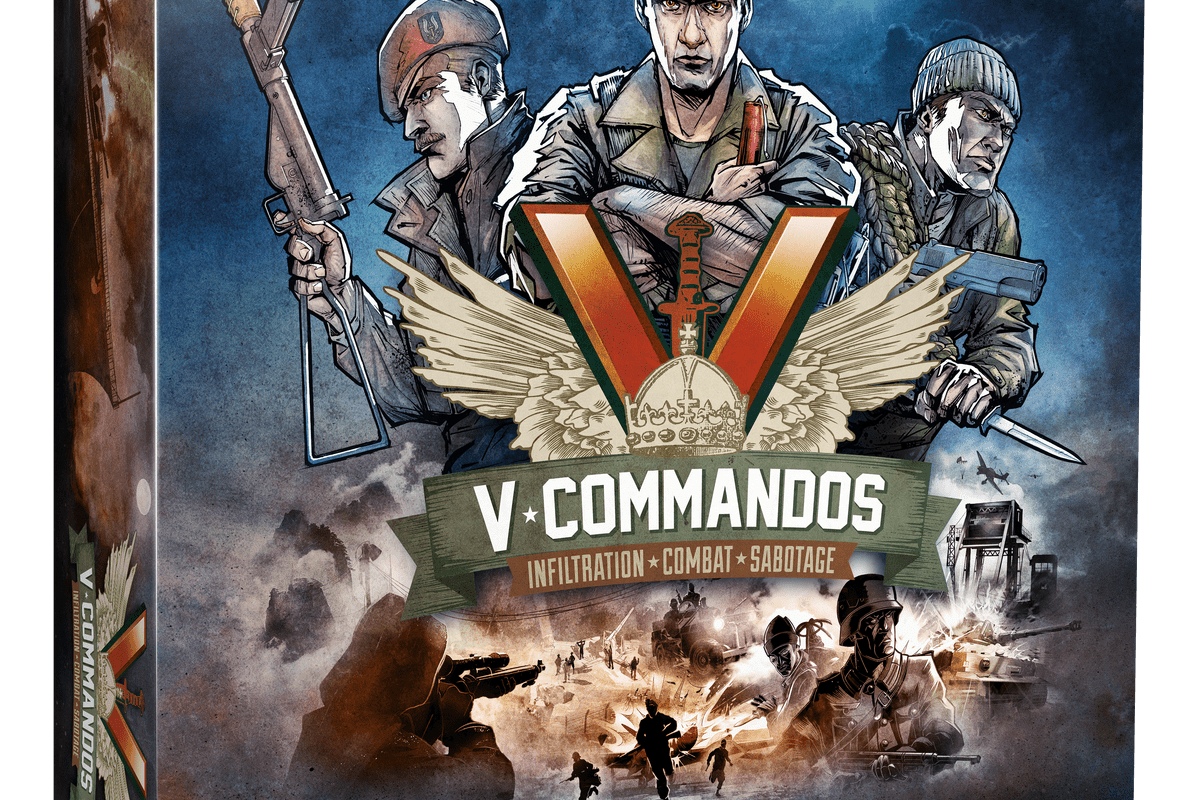




Show Comments